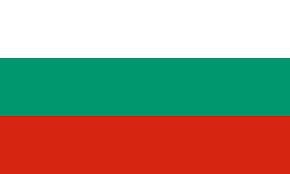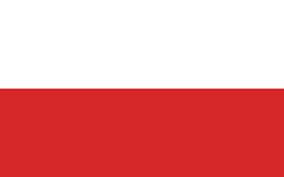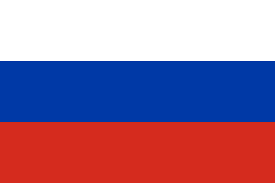Tailored Demographics Data to Meet Your Needs
At Geolocet, we offer high-quality, comprehensive demographics datasets with worldwide coverage at the best market price and straightforward terms of use. Our flexible three-tier solution ensures you get the data you need, how you need it, empowering your business decisions effectively.
-

Standard Demographics Solution
Our standard solution provides a comprehensive dataset with a predefined set of variables at standard administrative or statistical geography levels. Follow the links in the Country Coverage list below for attribute availability per geography level, and contact us for a quote.
Country Coverage
Europe
Global
Who Can Benefit

Location Intelligence Companies
Location Analysis: Utilise demographic data to enhance geospatial analytics for site selection, market entry, and business expansion.
Spatial Data Enrichment: Combine our demographic data with other datasets to provide comprehensive insights.
Predictive Modeling: Build predictive models incorporating age, gender, and population distribution to forecast market trends and performance.
Retailers
Market Expansion: Identify optimal locations for new stores by understanding population density and consumer demographics.
Customer Profiling: Use demographic data to understand customer segments, preferences, and behaviours.
Sales Optimisation: Target promotions and marketing efforts based on local demographics to boost sales and customer engagement.
Real Estate Developers and Agents
Site Selection: Identify high-growth areas by analysing population dynamics, such as age distribution and household size.
Investment Strategy: Use demographic data to prioritise investments in residential, commercial, or mixed-use developments.
Demand Forecasting: Forecast future housing needs and preferences based on demographic trends.
Marketers and Advertisers
Targeted Campaigns: Create targeted marketing campaigns by understanding demographic profiles and regional differences.
Audience Segmentation: Leverage data to segment audiences effectively and enhance campaign personalisation.
Performance Tracking: Measure campaign impact by analysing demographic engagement and conversion rates.
Consulting Firms
Strategic Advising: Use demographics data to offer evidence-based recommendations on market entry, expansion, and customer engagement strategies.
Competitive Analysis: Analyse population trends and socioeconomic indicators to assess market opportunities and threats.
Client Solutions: Provide tailored insights and solutions for clients across various industries by leveraging comprehensive demographic datasets.
Financial Institutions
Risk Assessment: Evaluate market risk by analysing demographic trends, such as population growth, age distribution, and income levels.
Investment Decisions: Identify lucrative investment opportunities by understanding regional demographics and economic indicators.
Market Analysis: Use demographics data to assess demand for financial products and services in specific areas.
Investors and Venture Capitalists
Opportunity Identification: Pinpoint high-growth areas and emerging markets by analysing population trends and demographic shifts.
Market Validation: Use demographics data to validate investment opportunities by understanding consumer demand, market size, and potential growth.
Portfolio Optimisation: Make data-driven decisions to diversify and optimise investment portfolios based on regional demographics and economic indicators.
Academic Researchers and Data Scientists
Data-Driven Research: Access reliable demographics data for research, studies, and trend analysis.
Advanced Analytics: Utilise granular data for building robust statistical models and uncovering patterns.
Collaborative Studies: Combine our datasets with other variables to produce comprehensive academic studies.
Nonprofits and NGOs
Program Planning: Design effective programs and interventions by understanding the demographics and needs of target communities.
Resource Allocation: Allocate resources strategically by analysing population data, such as age, gender, and socioeconomic status, to maximise impact.
Advocacy and Outreach: Use demographic insights to identify and engage with specific populations, ensuring outreach efforts are inclusive and representative.
Use Cases

Market Research and Analysis
Identify and understand target markets by analysing population demographics such as age, gender, employment, and education levels.
Use these insights to tailor products, services, and marketing strategies to specific consumer segments.

Location Planning and Site Selection
Determine optimal locations for new stores, offices, or facilities by analysing population density, age distribution, and household income.
Leverage demographic datasets to ensure proximity to target customers and maximise foot traffic and sales potential.

Real Estate Investment and Valuation
Analyse demographic datasets to identify high-growth areas for residential and commercial real estate investments.
Understand local demand dynamics, such as age and employment levels, to accurately value properties and prioritise investments.

Customer Segmentation
Divide your customer base into distinct groups based on demographics such as age, gender, income, and lifestyle.
Use these segments to tailor marketing messages, product offerings, and customer experiences, enhancing engagement and driving sales.

Brand Expansion and Market Entry
Evaluate new markets for expansion using demographic datasets to assess potential demand, competition, and customer needs.
Develop go-to-market strategies tailored to the characteristics of the target demographic, ensuring successful entry.

Product Development and Positioning
Design and position products based on demographic insights, such as preferences, needs, and purchasing behaviours of different population groups.
Ensure your products meet market demand and resonate with target customer segments.

Academic Research and Social Studies
Support demographic and social research with comprehensive datasets that provide insights into population trends, migration patterns, and socioeconomic factors.
Use this data to build robust models and contribute to academic and policy discourse.























































